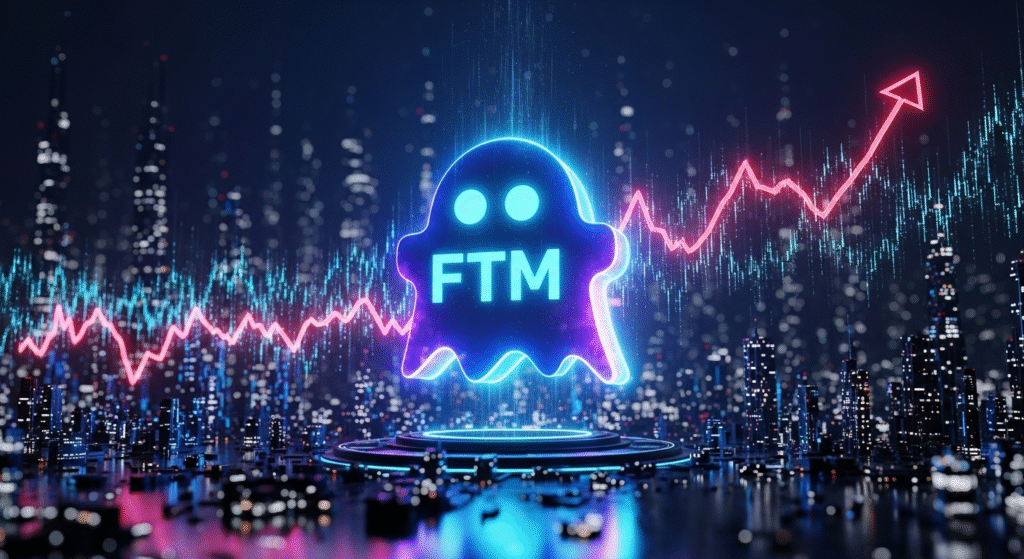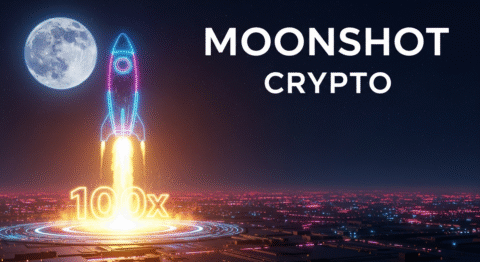Are you tired of the same old cryptocurrency narratives, desperately seeking that next disruptive altcoin with the potential for genuine, explosive growth? In a market often dominated by Bitcoin and Ethereum, it’s easy to overlook the burgeoning ecosystems and innovative projects that could redefine the future of decentralized technology. But what if the key to unlocking significant portfolio gains lies not in the giants, but in the agile, technologically superior platforms often flying under the radar? Many investors mistakenly believe that altcoin success is purely luck, but data suggests a more nuanced reality. Ready for explosive altcoin growth? Uncover Fantom Opera‘s best-kept secrets. Get actionable tips & strategies to maximize your crypto gains today. Discover success!
The allure of altcoins, particularly those with robust underlying technology and strong community backing, presents a compelling opportunity for savvy investors. Among these, Fantom Opera the blockchain platform, has consistently demonstrated a commitment to scalability, security, and developer-friendliness, making it a fertile ground for innovation and potential parabolic price movements. This isn’t just about chasing the next meme coin; it’s about understanding the fundamental value propositions that drive long-term growth in the decentralized world.
Crypto Market Overview: Navigating the Altcoin Seas
The cryptocurrency market is a dynamic organism, constantly evolving with new trends, technological advancements, and shifting investor sentiment. While Bitcoin often sets the pace, the altcoin market is where much of the innovation and potential for outsized returns can be found. We’ve witnessed significant trends recently, from the explosive rise of certain meme coins to the ongoing development of Layer-1 scaling solutions.
Currently, the altcoin market is experiencing a period of what analysts are calling “re-accumulation” after periods of intense volatility. Data from cryptocurrency analytics firms indicates that while larger-cap altcoins like Solana and Cardano continue to capture attention, a significant portion of investor interest is migrating towards platforms with strong technological underpinnings and active developer communities. Specifically, projects focusing on DeFi (Decentralized Finance), NFTs (Non-Fungible Tokens), and advanced blockchain architecture are showing resilience and promising growth indicators.
The prevalence of airdrops, while sometimes a marketing tactic, also signals a growing distribution model for new tokens, offering opportunities for early adopters. However, distinguishing between a genuine project launch and a simple promotional stunt requires a deep dive into the technology and the team behind it. This is where understanding platforms like Fantom Opera becomes crucial for identifying genuine growth opportunities.

The Core Concept: How Fantom Opera Actually Works
At its heart, Fantom Opera is a high-performance, scalable, and secure blockchain platform designed to host decentralized applications (dApps) and smart contracts. It utilizes a novel consensus mechanism that sets it apart from many other blockchain networks, enabling faster transaction speeds and lower fees, crucial elements for widespread adoption.
What Are Altcoins?
Altcoins, short for “alternative coins,” are cryptocurrencies other than Bitcoin. They emerged as developers sought to improve upon Bitcoin’s limitations or explore entirely new use cases for blockchain technology. Altcoins can range from direct forks of Bitcoin to entirely new blockchain architectures with unique consensus mechanisms, tokenomics, and functionalities. Their diversity is their strength, offering a spectrum of innovation across payments, smart contracts, decentralized finance, gaming, and more.
Fantom crypto falls under the category of altcoins, specifically a Layer-1 blockchain platform designed for speed and scalability. Unlike many older blockchains that struggle with transaction throughput and high fees, Fantom’s architecture aims to overcome these limitations.
Key Components & Technologies
The innovation behind Fantom Opera lies in its Lachesis consensus mechanism. This is a proprietary, asynchronous Byzantine Fault Tolerance (aBFT) consensus algorithm that allows for near-instantaneous transaction finality and incredible scalability.
- Lachesis Consensus: This is the engine that drives Fantom. Unlike Proof-of-Work (PoW) or Proof-of-Stake (PoS) systems, Lachesis is an aBFT DAG (Directed Acyclic Graph) consensus mechanism. This means:
- Speed: Transactions are confirmed in seconds, leading to a much faster user experience compared to traditional blockchains.
- Scalability: It can handle a high volume of transactions per second without significant network congestion or a rise in fees.
- Decentralization: While the specific implementation of aBFT can vary, Lachesis is designed to maintain a high degree of decentralization, allowing anyone to become a validator by staking FTM, the native token.
- Smart Contracts: Fantom Opera supports smart contracts, primarily through its compatibility with the Ethereum Virtual Machine (EVM). This means developers familiar with Solidity and Ethereum can easily deploy their dApps onto Fantom, leveraging its faster speeds and lower fees. This EVM compatibility is a significant advantage, allowing for interoperability and easier migration of existing Ethereum dApps.
- Ecosystem Development: Fantom is actively fostering its ecosystem through grants, developer support, and partnerships. This focus on developer experience and ecosystem growth is crucial for attracting innovation and building locked value on the network.
The Data-Driven Perspective: Unlocking Fantom’s Potential
To understand the potential for explosive growth, we must look beyond the hype and examine the data – market trends, technological adoption, and economic models.
Market Data & Trends
- Transaction Volume: Data from block explorers consistently shows a high and growing transaction volume on the Fantom Opera network, often exceeding that of many established Layer-1 blockchains. This indicates strong user activity and dApp usage. For instance, during peak periods, Fantom has demonstrated transaction volumes that rival or surpass networks with much larger market caps, signaling underlying utility.
- Total Value Locked (TVL) in DeFi: Fantom’s DeFi ecosystem has seen substantial growth. The TVL, representing the total value of assets locked in its smart contracts, has experienced significant surges, indicating user confidence and the adoption of Fantom-based DeFi protocols. While TVL can fluctuate with market sentiment, consistent growth in this metric is a strong positive indicator. Tools like DeFiLlama provide real-time data on TVL across various blockchains.
- Developer Activity: On-chain data and developer community engagement metrics (e.g., GitHub commits, active developers) are crucial. Fantom has a vibrant developer community, with numerous projects building and deploying on the platform, ranging from lending protocols and decentralized exchanges to NFT marketplaces and gaming applications. This active development is a key driver of on-chain activity and future value.
Tokenomics & Market Health
The tokenomics of FTM, Fantom’s native utility token, play a pivotal role in its growth.
- Utility of FTM:
- Staking: Users can stake FTM to secure the network and earn staking rewards. This incentivizes long-term holding and participation.
- Transaction Fees: FTM is used to pay for transaction fees on the network, creating demand for the token as network usage increases.
- Governance: In future iterations, FTM may also be used for network governance, allowing token holders to vote on protocol upgrades and parameter changes.
- Supply and Inflation/Deflation: Understanding the token’s supply schedule and any burning mechanisms is vital. Fantom’s tokenomics are designed to be deflationary over time, with a portion of transaction fees being burned. This mechanism, combined with staking rewards, aims to balance supply and demand, potentially driving value appreciation as network usage grows and tokens are removed from circulation.
- Market Capitalization vs. Utility: Comparing Fantom’s market capitalization to its actual network usage and dApp ecosystem can reveal whether it’s undervalued or overvalued. Currently, data suggests that Fantom’s intrinsic utility and technological advancements often outperform its market valuation compared to some competitors, presenting a strong case for potential growth if adoption continues.
Risks, Challenges & Competition
While Fantom Opera presents significant opportunities, it’s crucial to approach it with a clear understanding of the inherent risks and its competitive landscape.
Risks of Altcoins and Meme Coins
- Volatility: The cryptocurrency market, especially altcoins, is notoriously volatile. Prices can experience dramatic swings in short periods due to market sentiment, regulatory news, or macroeconomic factors.
- Security Vulnerabilities: While Fantom has a robust consensus mechanism, all blockchain platforms are subject to potential smart contract exploits or network attacks. Developers must adhere to rigorous security practices.
- Regulatory Uncertainty: The regulatory environment for cryptocurrencies is still evolving globally. New regulations or restrictions could impact the price and usability of FTM and other altcoins.
- Adoption Hurdles: Widespread adoption of any blockchain platform depends on user-friendliness, developer adoption, and integration with existing financial systems. Challenges in these areas can hinder growth.
- Market Manipulation: The altcoin market, particularly smaller-cap projects, can be susceptible to pump-and-dump schemes and other forms of market manipulation, making due diligence paramount.
How Does Fantom Opera Stack Up Against Competitors?
Fantom operates in a highly competitive space, with numerous Layer-1 blockchains vying for developer attention and user adoption. Here’s a comparative analysis:
| Feature | Fantom Opera | Ethereum | Solana | Binance Smart Chain (BNB Chain) |
|---|---|---|---|---|
| Consensus | Lachesis (aBFT DAG) | Proof-of-Stake (formerly PoW) | Proof-of-History + PoS | Proof-of-Staked Authority |
| Transaction Speed | Seconds | Minutes (increasing with upgrades) | Seconds | Seconds |
| Transaction Fees | Very Low | Can be high during network congestion | Low to Moderate | Low to Moderate |
| Scalability | High (designed for 10,000+ TPS) | Improving with Eth2 upgrades, but historically limited | High (designed for 65,000+ TPS) | High |
| EVM Compatibility | High (allows easy migration from Ethereum) | N/A (native EVM) | Limited (requires bridging solutions) | High (similar to Ethereum) |
| Developer Ecosystem | Growing rapidly, strong developer support | Mature, largest dApp ecosystem | Strong, but with occasional network instability issues | Large, heavily influenced by Binance |
| Tokenomics | Staking, fee burning (potentially deflationary) | Staking, fee burning (ETH 2.0 implementation) | Staking, transaction fees | Staking, transaction fees, burning mechanism |
| Main Use Cases | DeFi, NFTs, enterprise solutions | DeFi, NFTs, dApps, global settlement layer | DeFi, NFTs, NFTs, Web3 Gaming | DeFi, NFTs, Gaming, everyday transactions |
Fantom Opera distinguishes itself through its unique Lachesis consensus, offering a compelling blend of speed, low fees, and EVM compatibility. While Ethereum remains the dominant smart contract platform, its scaling challenges create opportunities for faster and cheaper alternatives like Fantom. Solana offers comparable speed but has faced criticism for network instability and less EVM compatibility. Binance Smart Chain is also a strong competitor, but Fantom’s decentralized governance and independent infrastructure offer a different proposition.
The Future Outlook: What’s Next for Fantom?
The future of Fantom Opera appears bright, contingent on continued development, ecosystem expansion, and broader market adoption. Several factors point towards sustained growth:
What’s Next for Altcoins?
The altcoin market is poised for continued innovation. As blockchain technology matures, we can expect to see:
- Increased Focus on Scalability and Interoperability: Projects that can efficiently scale and interoperate with other blockchains will likely gain traction. Fantom’s architecture is well-positioned for this.
- Maturation of DeFi and NFTs: As these sectors evolve, platforms that offer robust infrastructure for these applications will be crucial. Fantom’s strong DeFi ecosystem is a testament to this.
- Enterprise Adoption: Businesses are increasingly exploring blockchain solutions for supply chain management, data security, and digital identity. Platforms with high throughput and low costs, like Fantom, are attractive candidates for enterprise integration.
- Regulatory Clarity: As regulations become clearer, institutional investment in the altcoin market is likely to increase, benefiting well-established and compliant projects.
For Fantom Opera, the roadmap includes further enhancements to its Lachesis consensus, expanding its developer tools, and forging strategic partnerships to onboard more users and dApps. The potential for cross-chain bridges and integrations will also be key to unlocking liquidity and user bases from other ecosystems. Continued investment in developer grants and hackathons ensures a pipeline of new applications and innovation on the platform.
Conclusion
The altcoin market offers a world of opportunity for those willing to look beyond the established giants and delve into the technological innovations driving the future of blockchain. Fantom Opera stands out as a prime example of a project with the technological prowess, active community, and strategic vision to achieve significant growth.
Its Lachesis consensus mechanism, EVM compatibility, and dedication to a thriving ecosystem position it as a strong contender in the competitive Layer-1 space. By understanding its core technologies, analyzing its market data, and weighing its risks against its potential, investors can make more informed decisions in their pursuit of explosive altcoin growth.
What are your thoughts on Fantom Opera and its potential for the future? Do you hold FTM or use any dApps on the Fantom network? Share your experiences and insights in the comments below! For more deep dives into promising altcoins and cryptocurrency strategies, be sure to subscribe to our newsletter and explore our other articles on [link to related content 1] and [link to related content 2].
FAQs
Q1: What is FTM and what is its role on the Fantom network?
FTM is the native utility token of the Fantom Opera blockchain. It is used for staking to secure the network, paying transaction fees, and will play a role in network governance.
Q2: Is Fantom Opera truly decentralized?
Fantom Opera utilizes a permissionless aBFT consensus mechanism, allowing a wide range of participants to become validators through staking FTM. This design aims to achieve high levels of decentralization.
Q3: How does Fantom Opera compare to Ethereum in terms of speed and cost?
Fantom Opera generally offers significantly faster transaction finality (seconds vs. minutes) and much lower transaction fees compared to Ethereum, especially during periods of high network congestion on Ethereum.
Q4: What are some popular DeFi applications on Fantom Opera?
Some popular DeFi protocols on Fantom include SpookySwap (a DEX), Scream (a lending protocol), and SpiritSwap (another DEX with yield farming opportunities).
Q5: Is it safe to invest in altcoins like FTM?
Investing in any cryptocurrency, including FTM, carries inherent risks due to market volatility and regulatory uncertainty. It’s crucial to conduct thorough research (DYOR) and only invest what you can afford to lose. Fantom has strong technological fundamentals, but past performance is not indicative of future results.






